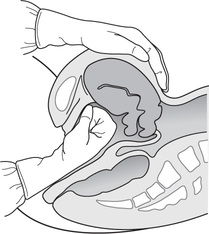Ten steps to successful breastfeeding • Breastfeeding policy communicated to all staff. • All healthcare staff trained to implement policy. • All pregnant mothers informed of breastfeeding benefits and management. • Mothers assisted to commence breastfeeding within half hour of delivery. • Education of mothers regarding breastfeeding and maintenance of lactation even when separated from babies. • Neonates to be given only breast milk unless medically necessary. • Encourage on-demand breastfeeding. • No teats or dummies to be given to breastfeeding babies. bacilluria presence of bacilli in urine. bacteraemia bacteria in blood. bacteriological examination microscopic examination of body fluids or tissues to identify bacteria. bacteriology science of study of bacteria. bacteriophage virus that infects bacteria. bacteriostatic able to prevent multiplication of bacteria. bag of membranes amnion and chorion containing amniotic fluid and fetus; amniotic sac. bartholinitis inflammation of one or both bartholin’s glands, leading to abscess or cyst. basal body temperature temperature of body at rest. basophil leucocyte with affinity for basic dyes. battledore placenta placenta with umbilical cord attached to margin. See also placenta. bilateral pertaining to both sides. bilirubinometer instrument for measuring serum bilirubin concentration. biliverdin green bile pigment, oxidised bilirubin. bioavailability amount of drug which, after administration, reaches site of physiological activity. biochemistry chemistry of living matter. biopsy removal of tissue from body for microscopic examination and diagnosis. biorhythm cyclic biological event affecting daily life, e.g. menstrual cycle, sleep pattern.
B
![]()
Stay updated, free articles. Join our Telegram channel

Full access? Get Clinical Tree


Nurse Key
Fastest Nurse Insight Engine
Get Clinical Tree app for offline access

